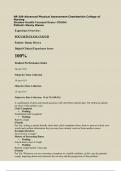Summary
Summary Wars of the Roses: A-level Information Booklet
- Course
- Institution
A set of in-depth revision slides on the wars of the roses covering the periods under the reigns of Henry VI to Richard III and everything in between. Suitable for reading over and printing to be used as posters.
[Show more]












